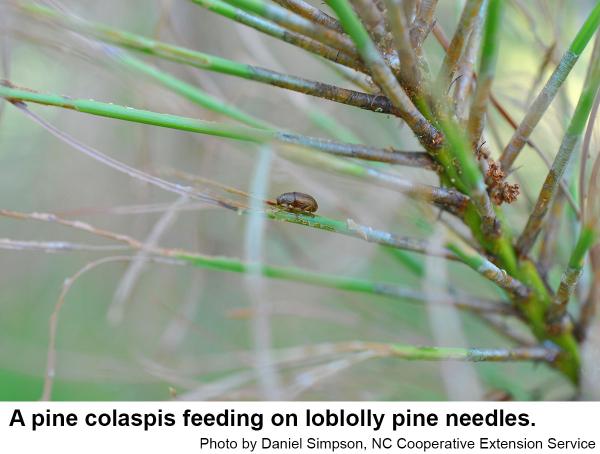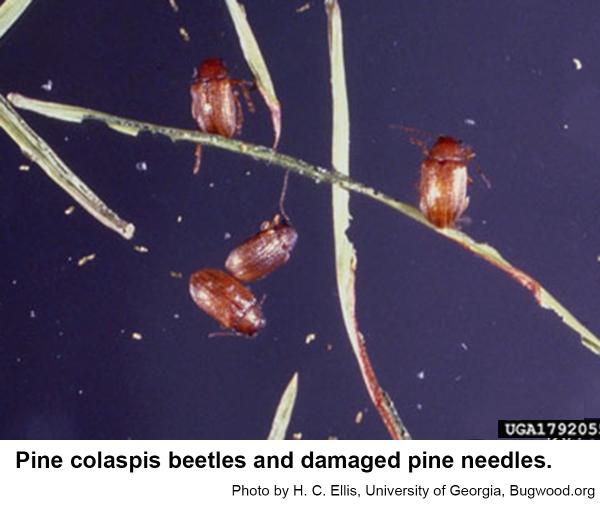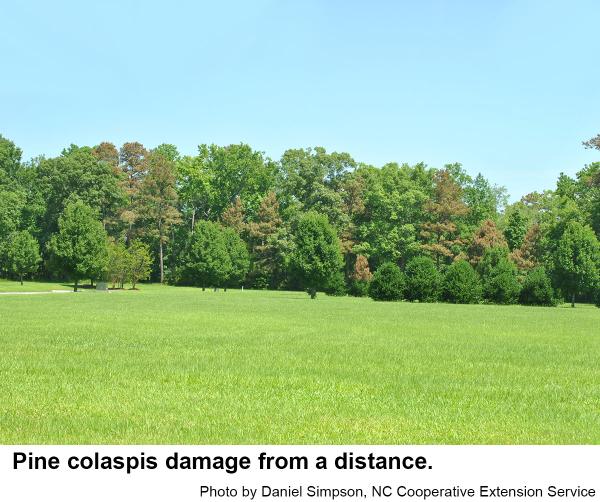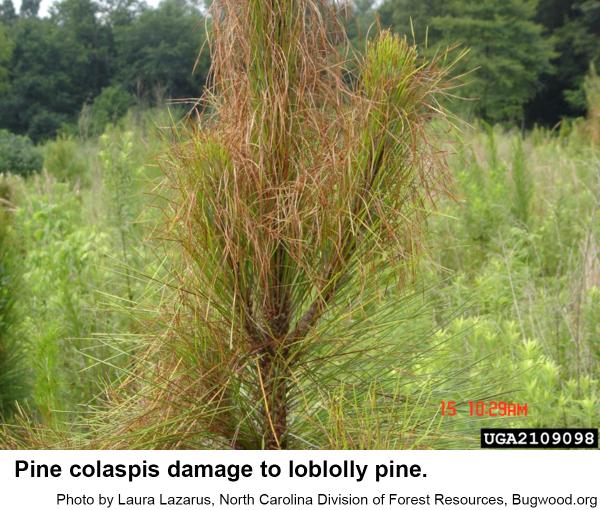Description and Biology
The pine colaspis, Colaspis pini, is a small leaf beetle almost ¼ inch long. They are rusty yellow to brown and sometimes have reflective green highlights. The body is robust. A new generation of beetles emerges in spring as the soil warms up. Adult beetles become active on trees by early summer, but they feed mostly at night so these beetles may be overlooked. Females beetles lay their eggs on the herbaceous undergrowth in pine stands from June through August. The larvae are rootworms that feed on the roots of grasses and weeds under pines. The winter is spent as larvae deeper in the soil. They pupate the next spring. We have only one generation per year.
Host Plants
Adults feed on loblolly pine, longleaf pine, sand pine, shortleaf pine, slash pine, and spruce pine. Occasionally bald cypress and spruces are infested. Damage is usually first noticed by scattered patches of reddish-brown crowns of young pines. Pine colaspis beetles feed along one edge of a needle. Affected needles have ragged, serrated edges and turn brown. Pine colaspis beetles prefer the newest needles, but when populations are high, they feed on all needles. Although trees may become noticeably brown, the damage is not thought to be health threatening.
Residential Recommendations
These beetles should be susceptible to Sevin and other contact insecticides, especially the pyrethroids labeled for home landscape use. When used as directed, pyrethroids are very toxic to insects but are not particularly hazardous to humans and pets (other than fish-avoid using pyrethroids around pools, ponds, and streams). Small pines in landscapes can be treated as soon as the beetles and their damage are first noticed.
References
- Pine Colaspis Beetle Common Problem This Time of Year. Anonymous. 2014. News, Department of Agriculture & Forestry, State of Louisiana.
- Insects and Diseases, Important Problems of Florida’s Forest and Shade Tree Resources. Barnard, E. L. and W. N. Dixon. 1983. Florida Forest Service Bulletin No. 196-A.
- The North Carolina Forest Service Forest Health Handbook, 3rd Edition. Blaidow, R. A. 2011 (updated 2013).
- Extension Plant Pathology Publications and Factsheets
- Horticultural Science Publications
- North Carolina Agricultural Chemicals Manual
For assistance with a specific problem, contact your local Cooperative Extension Center.
This Factsheet has not been peer reviewed.
Publication date: June 2, 2016
Reviewed/Revised: Oct. 10, 2019
N.C. Cooperative Extension prohibits discrimination and harassment regardless of age, color, disability, family and marital status, gender identity, national origin, political beliefs, race, religion, sex (including pregnancy), sexual orientation and veteran status.





